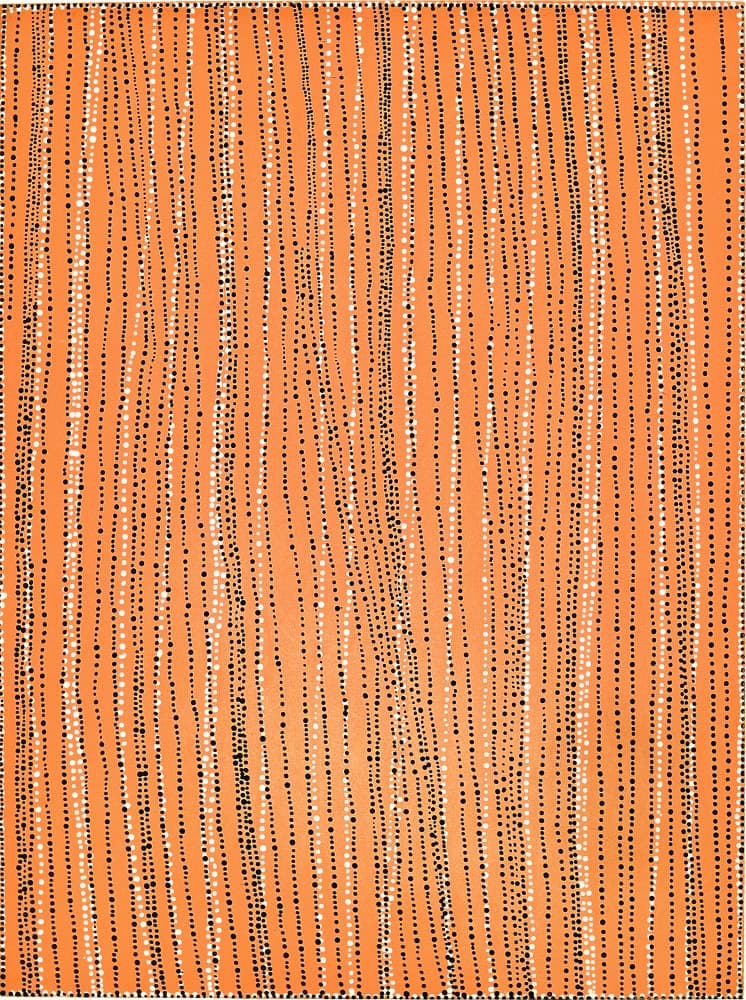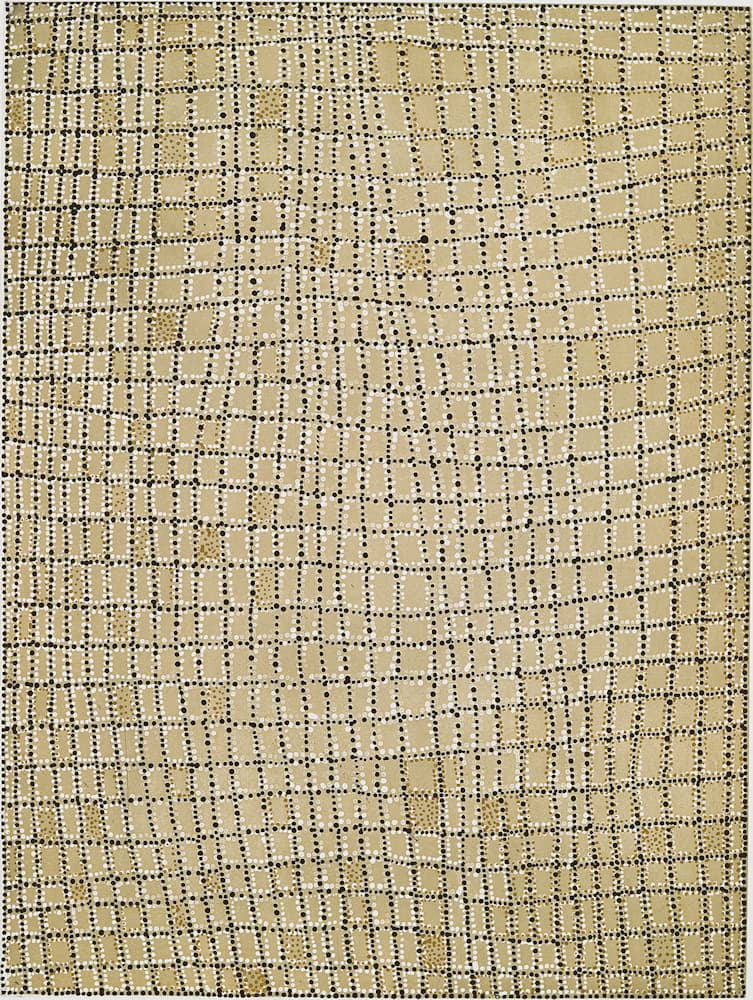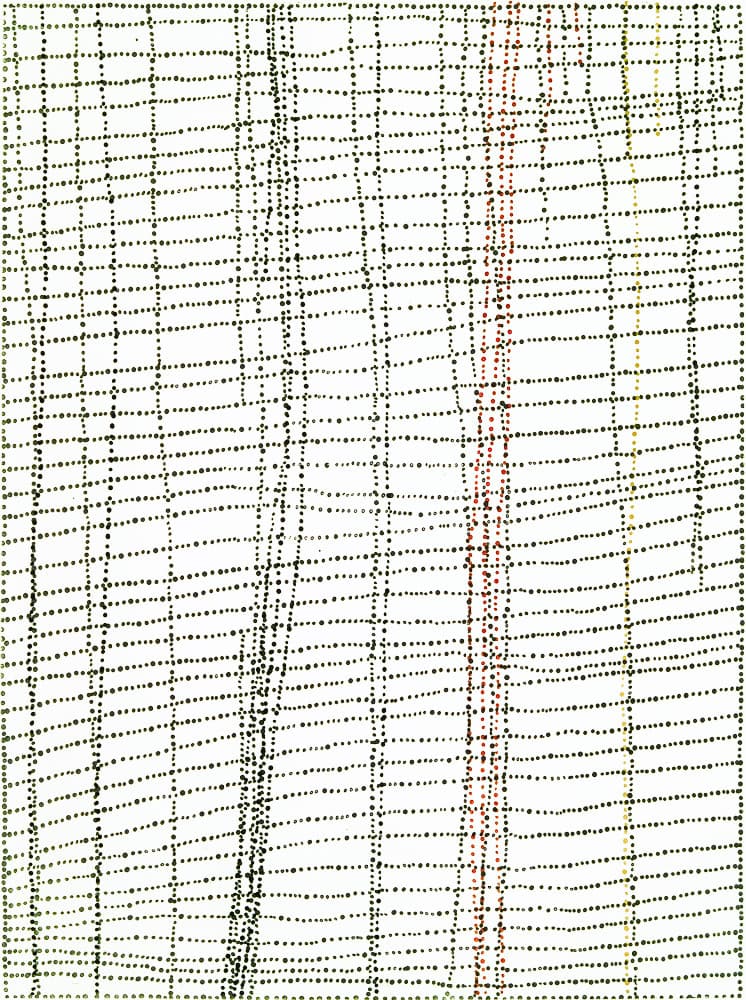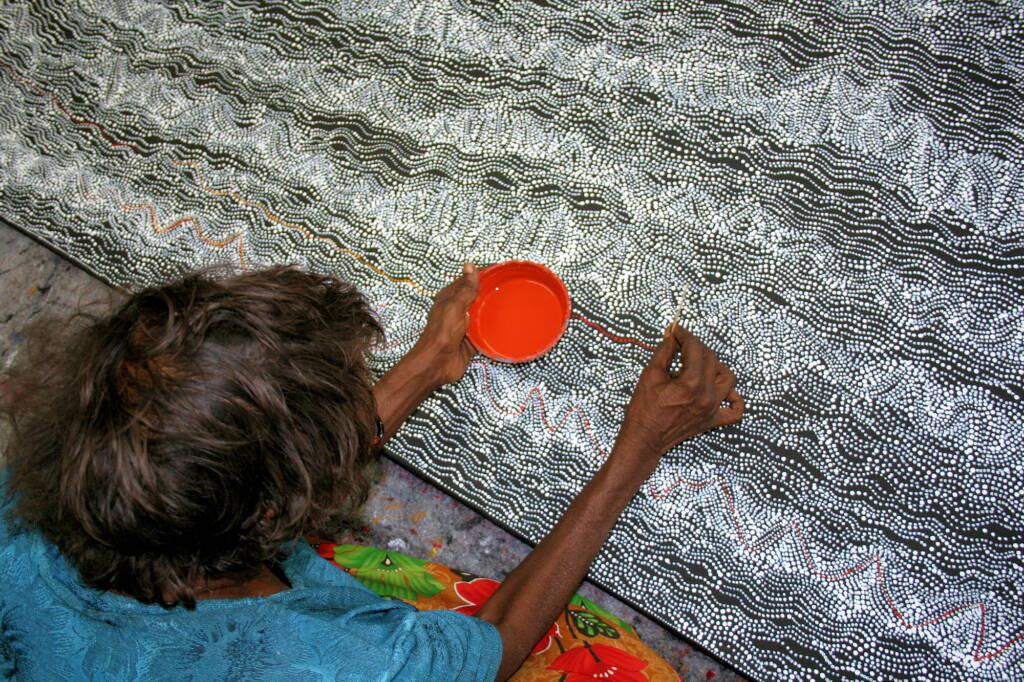| WARNING: Aboriginal and Torres Strait Islander people are warned that this website contain images, voices and names of people who have passed away. |

Dorothy Napangardi is internationally regarded as one of the leading exponents of the contemporary Aboriginal art movement and has held numerous solo and group exhibitions throughout Australia, the United States and Europe.
Her serenely beautiful paintings merge minimalism with stories of her ancestral country, Mina Mina in ways that reverberate across the broad domain of visual language. Apart from the formal elegance her paintings communicate ideas of travel, myth and spirituality. The spatial impact of her work is expansive, flowing and ethereal in felling.
Honouring and Remembering the Art and Life of Dorothy Napangardi 1987-2013, Gallery Gondwana
One of the leading artists of the contemporary Aboriginal art movement, Napangardi’s work is highly sought after by both collectors and curators worldwide. Her paintings and prints have been widely exhibited and are in all national collections within Australia and in major collections worldwide including most recently the MET, New York. Napangardi had the honour of being the 2nd indigenous artist to be given a solo survey exhibition at the MCA (Museum of Contemporary Art), Sydney that traced 11 years of her painting career in 1991.



Painting Style
Dorothy has a very individual painting style that she developed by elaborating on the traditional designs of the kurawarri (iconography associated with individual dreaming stories), her paintings focus on her ancestral country of Mina Mina, that is a highly significant sacred site particularly for women, as it is the point of origin for Karntakurlangu Jukurrpa (Women’s Dreaming) for not only the Warlpiri but also for the Kukutja whose traditional lands are to the west.
It was at Mina Mina that during Jukurrpa (the creation era) digging sticks emerged from the ground which the women took up as they commenced their journey along the dreaming route travelling east. Today these digging sticks are represented by the kurrkara (desert oaks) at the site. Mina Mina consists of two large claypans with several mulju (water soakages).
Her kinship responsibility is to her subsection group of Napanangka / Napangardi. Each custodian must know the songs, dances, rituals and body paint designs to ensure that this knowledge is passed on to their nieces as is the obligation of traditional law. Artists often refer to this as “keeping the Dreaming strong”.
Dreaming and Country
Karntakurlangu literally translates from Warlpiri language into ‘Belonging to Women’. The site depicted is Mina Mina, a sacred women’s site which is located on the far west border of the Northern Territory, near the Western Australian border, close to the great salt lake of Lake MacKay. It comprises of a large claypan that fills with water after rain surrounded by large desert oak trees.
During the Dreaming women of the Napangardi (Dorothy’s ‘skin’ name) and Napanangka (aunties for the Napangardi kinship) sang and danced this country into existence. This is how traditional knowledge is passed on – from auntie (father’s sisters) to niece.
Sandhills of Mina Mina and Digging Stick Possessing Dreaming are key subject matters for Dorothy Napangardi’s paintings. Digging sticks are women’s traditional and ceremonial tools used for such tasks as digging up yams and goannas, making shelter, learning about ‘women’s business’ and for ‘sorry business’ (funerals). According to this Dreaming ancestral women made the tracks that formed the topography of the desert region, while dancing eastward with their digging sticks.
During their journey they were confronted by the Warlpiri Snake (Walyankarna), who himself was travelling north to the Granites. To scare him away they danced enthusiastically, billowing up dust, which formed the sandhills of Napangardi’s country. Represented in profile and as an elaborate grid pattern in aerial view, Napandgardi paints her country’s topography with intricate dotted lines that weave in and out to create a strong sense of movement and symbol of her ancestors’ journey and adventures.

Footnote & References
- Dorothy Napangardi, Gallery Gondwana retrieved 1 December 2020m https://gallerygondwana.com.au/artists/dorothy-napangardi
Aboriginal ArtistsDorothy Napangardi Kukula McDonald Raymond Walters Japanangka Selma Coulthard Trephina Sultan Thanguwa
